We ask you, urgently: don't scroll past this
Dear readers, Catholic Online was de-platformed by Shopify for our pro-life beliefs. They shut down our Catholic Online, Catholic Online School, Prayer Candles, and Catholic Online Learning Resources essential faith tools serving over 1.4 million students and millions of families worldwide. Our founders, now in their 70's, just gave their entire life savings to protect this mission. But fewer than 2% of readers donate. If everyone gave just $5, the cost of a coffee, we could rebuild stronger and keep Catholic education free for all. Stand with us in faith. Thank you.Help Now >
This is where you can find the deadliest substance in the world, right next to the beach. And it's about to move closer!
FREE Catholic Classes
Nuclear power is an amazing source of energy, virtually limitless in potential. It's extremely safe, and efficient. But it produces a byproduct that wipes out all those benefits. Spent nuclear fuel must be disposed of for hundreds of thousands of years, much longer than humans have walked the Earth. And long-term storage of such fuel is expensive.
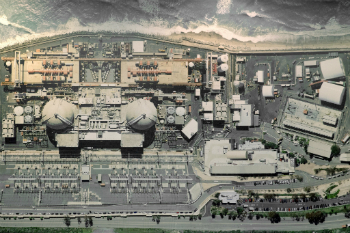
San Onofre nuclear power plant no longer operates, but what's left behind is so dangerous its protected by an army of guards.
Highlights
Catholic Online (https://www.catholic.org)
7/3/2017 (8 years ago)
Published in Green
Keywords: Son Onofre, nuclear, waste, power, Yucca Mountain
LOS ANGELES, CA (California Network) -- There are several nuclear power plants sitting unused in the United States. Renewable energy, such as solar power is taking the world by storm, eliminating the need for other forms of energy generation.
Nuclear power once held tremendous promise, but now it is seen more as a liability. Plants such as San Onofre, just north of San Diego, and situated right on the California coast, are of particular concern. At San Onofre, the spent fuel is being kept in temporary containers as lawmakers and experts spar over what to do with the dangerous material, and how to pay for it.
Spent nuclear fuel is possibly the most dangerous substance known to humanity. Exposure to a fuel rod could cause death from radiation poisoning within minutes to hours. A smaller dose would kill you within months or years. In all cases, an early death is guaranteed.
A terrorist could use radioactive material con construct a dirty bomb, that is a bomb that spreads radioactive material across a wide area, rendering the space uninhabitable. Again, the exposed people would die. Waste in the water has been known to spread across entire oceans.
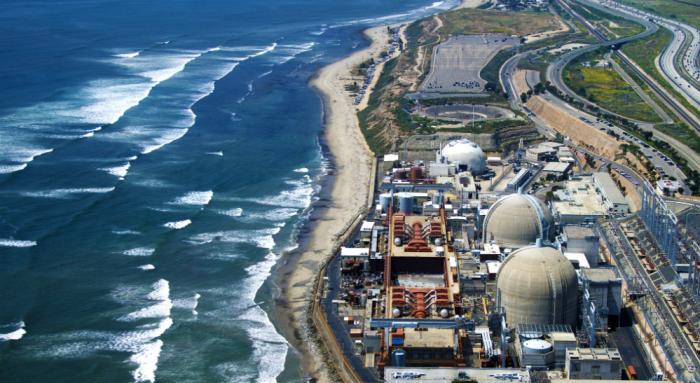
The San Onofre nuclear power plant is situated along the pristine California coasline, north of San Diego.
San Onofre, as well as many other sites are well guarded by personnel with automatic rifles. Dire warnings keep civilians out. The plant produces nothing of value anymore. It just costs money.
It's the taxpayers who end up paying, to the tune of tens of billions. And a major reason is there remains no permanent storage site for the waste.
In the 1980s and 90s, legislators planned to build a centralized site at Yucca Mountain, Nevada, about a hundred miles north of Las Vegas. At that site, the fuel could be stored indefinitely. But the plan to build the site had a $100 billion price tag. There were legal and legislative challenges. Eventually, the plan was abandoned.
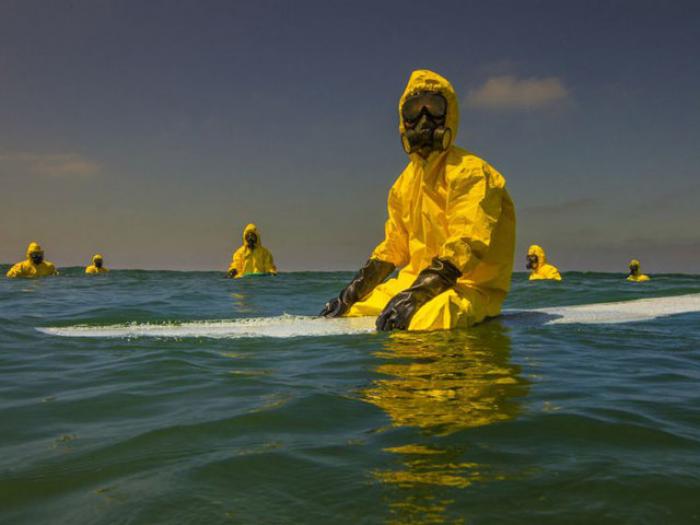
Photographer Michael Dyrland snapped this photo as part of a project to bring awareness to the crisis of polluted beaches. According to Dyrland, people in Southern California do not surf after it rains because of toxic runoff.
Now, experts are wondering if they can move the fuel to semi-permanent sites, where it can be stored for several decades as experts come up with a long-term solution.
There are places that want the waste, and the federal rent that comes with it. A Texas company from Hobbs is seeking to develop a site in New Mexico to store the waste. The site would be near the town of Eunice, New Mexico. The site would bring jobs and money into the region.
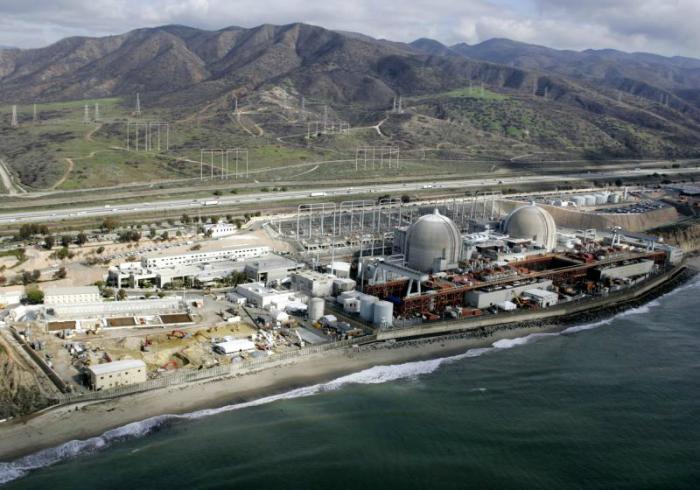
The power plant is a prominent feature next to California's Interstate 5. The Camp Pendleton Marine Corps Base is nearby along with naval installations and training facilities.
However, governments eventually collapse and one is left to wonder what would happen in a century or longer, should the site become permanent?
The government could stop paying its bill. A permanent site may never open. What happens in five-hundred years or a thousand?
Presently, the waste at San Onofre is likely to go into a temporary facility that will hold it safely for twenty more years. The facility will be built on the coast, next to the power plant. It's closer to the water, but experts promise it will be disaster proof, protected against terrorists, tsunamis and earthquakes. But it still isn't permanent. And area residents want it gone.
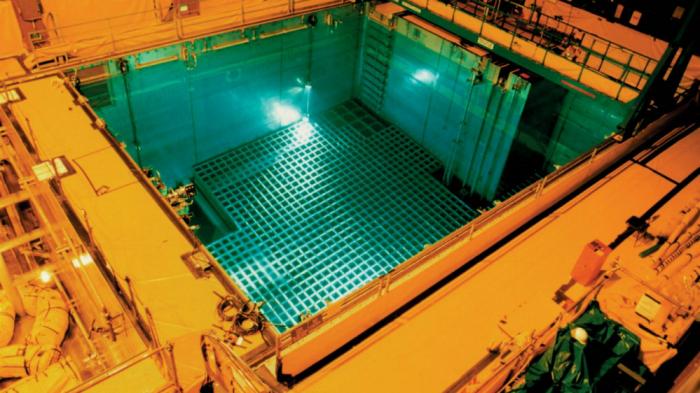
Spent fuel rods are kept in a submerged pool that keeps them cooled off. Eventually they will be transferred to a new facility. What to do with the fuel is a long term problem of utmost concern for future generations.
The Trump administration is exploring the possibility of using Yucca Mountain once again. He appears to have legislative support. Yucca Mountain may be the only viable long-term site in the nation. However, securing funding, which is sure to cost well in excess of $100 billion, will be a difficult proposition. Even if the site is built and opened, simply transporting the waste is another task that requires tremendous funding, and is a legal and logistical nightmare.
The only solution may be a tough and expensive one. Such is the cost of nuclear power. One thing is certain, the longer we delay, the more it will cost.
Subscribe Now - Catholic Online YouTube
---
'Help Give every Student and Teacher FREE resources for a world-class Moral Catholic Education'
Copyright 2021 - Distributed by Catholic Online
Join the Movement
When you sign up below, you don't just join an email list - you're joining an entire movement for Free world class Catholic education.
An Urgent Message from Sister Sara – Please Watch
- Advent / Christmas
- 7 Morning Prayers
- Mysteries of the Rosary
- Litany of the Bl. Virgin Mary
- Popular Saints
- Popular Prayers
- Female Saints
- Saint Feast Days by Month
- Stations of the Cross
- St. Francis of Assisi
- St. Michael the Archangel
- The Apostles' Creed
- Unfailing Prayer to St. Anthony
- Pray the Rosary
![]()
Copyright 2026 Catholic Online. All materials contained on this site, whether written, audible or visual are the exclusive property of Catholic Online and are protected under U.S. and International copyright laws, © Copyright 2026 Catholic Online. Any unauthorized use, without prior written consent of Catholic Online is strictly forbidden and prohibited.
Catholic Online is a Project of Your Catholic Voice Foundation, a Not-for-Profit Corporation. Your Catholic Voice Foundation has been granted a recognition of tax exemption under Section 501(c)(3) of the Internal Revenue Code. Federal Tax Identification Number: 81-0596847. Your gift is tax-deductible as allowed by law.








